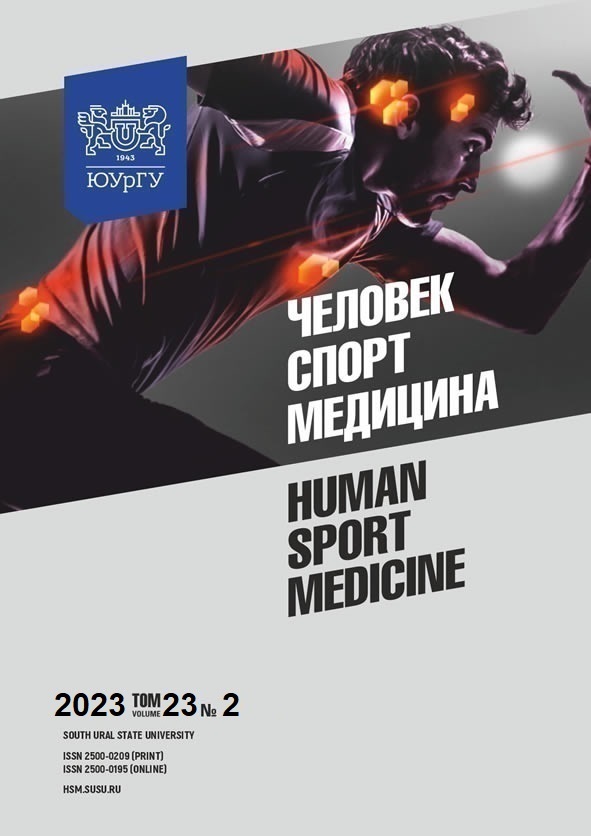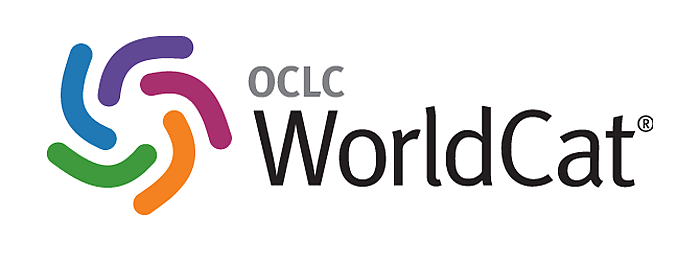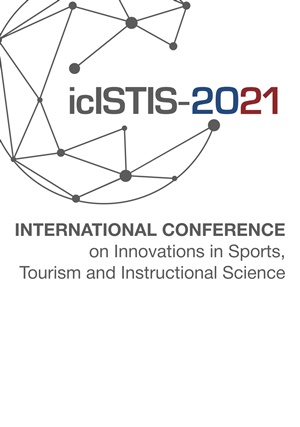РЕАБИЛИТАЦИЯ СПОРТСМЕНОК, ПЕРЕНЕСШИХ КЕСАРЕВО СЕЧЕНИЕ С ПОСЛЕДУЮЩИМ ПАТОЛОГИЧЕСКИМ РУБЦЕВАНИЕМ
Аннотация
Цель: разработка программы реабилитации постоперационных патологических функционально значимых рубцов и оценка ее клинической эффективности. Материалы и методы. На базе клиники профессора Кинзерского, ООО «Центр нейромышечной стабилизации», кафедры спортивной медицины и физической реабилитации и НИИ олимпийского спорта УралГУФК проходили курс реабилитации 65 спортсменок, средний возраст 20,6 ± 2,9 года, перенесших кесарево сечение с последующим патологическим рубцеванием. У всех спортсменок исследовалось в сыворотке крови содержание продуктов перекисного окисления липидов (ПОЛ) и Fe2+-аскорбат-индуцированное ПОЛ спектрофотометрическим методом. Пациентки были разделены на 3 группы: группа А получала инъекционную терапию ботулиническим токсином типа А (БТА). БТА – препарат «Ботокс», восстановленный 0,9%-ным физиологическим раствором в стандартной концентрации вводился внутрирубцово из расчета 2 ЕД на 1 кв см рубца); группа Б получала только мануальную терапию плюс тейпирование; группа В получала мануальную терапию с последующим кинезиотейпированием + ботулинический токсин типа А. Группа контроля здоровых для биохимических исследований была идентичного возраста и пола. Результаты. Выявлено снижение клинических проявлений патологии и значительный косметический эффект. У пациенток с функционально значимыми послеоперационными рубцами выявлялись достоверные признаки активизации липопероксидации на фоне снижения антиокислительной активности сыворотки крови. Данные показатели наиболее значительно улучшались в группе с наивысшим клиническим эффектом после реабилитации с использованием мануальной терапии + тейпы + БТА. Заключение. Реабилитация патологических функционально значимых рубцов должна проходить комплексно и включать несколько методик. Использование ботулотоксина типа А и включение его в комплексную терапию способствует успешному лечению гипертрофических клинически значимых рубцов, где необходима стимуляция пластических и трофических процессов в тканях, подверженных альтерации.
Литература
2. Кинзерская Н.А., Сумная Д.Б., Садова В.А. Причины образования и результаты реабилитации гипертрофических рубцов после операции кесарева сечения // Инновационная наука. 2022. № 1–2. С. 126–132. [Kinzerskaya N.A., Sumnaya D.B., Sadova V.A. [Causes of Formation and Results of Rehabilitation of Hypertrophic Scars After Cesarean Section]. Innovatsionnaya nauka [Innovative Science], 2022, no. 1–2, pp. 126–132. (in Russ.)]
3. Кинзерская, Н.А. Состояние системы ПОЛ-АОС у пациентов с функционально значимыми постоперационными рубцами // Проблемы подготовки научных и научно-педагогических кадров: опыт и перспективы: сб. науч. тр. молодых ученых УралГУФК. Вып. 18. Челябинск: УралГУФК, 2021. С. 94–98. [Kinzerskaya N.A. [The State of the LPO-AOS System in Patients with Functionally Significant Postoperative Scars]. Problemy podgotovki nauchnykh i nauchno-pedagogicheskikh kadrov: opyt i perspektivy: sbornik nauchnykh trudov molodykh uchenykh UralGUFK [Problems of Training Scientific and Scientific-Pedagogical Personnel. Experience and Prospects. Collection of Scientific Works of Young Scientists of the Ural State University of Physical Culture], 2021, iss. 18, pp. 94–98. (in Russ.)]
4. Стенько А.Г., Щукина Е.В., Шматова А.А. и др. Консервативное лечение пациентов с рубцовыми изменениями кожи методом электродного фармафореза // Рос. журнал кожных и венерич. болезней. 2014. № 1. С. 58–61. [Sten’ko A.G., Shchukina E.V., Shmatova A.A. et al. [Conservative Treatment of Patients with Cicatricial Skin Changes Using Electrode Pharmacophoresis]. Rossiyskiy zhurnal kozhnykh i venericheskikh bolezney [Russian Journal of Skin and Venereal Diseases], 2014, no. 1, pp. 58–61. (in Russ.)]
5. Карапетян Г.Э., Пахомова Р.А., Кочетова Л.В. и др. Лечение гипертрофических и келоидных рубцов // Фундамент. исследования. 2013. № 3. С. 70–73. [Karapetyan G.E., Pakhomova R.A., Kochetova L.V. et al. [Treatment of Hypertrophic and Keloid Scars]. Fundamental’nyye issledovaniya [Fundamental Research], 2013, no. 3, pp. 70–73. (in Russ.)]
6. Atkinson J.-A.M., McKenna K.T., Barnett A.G. et al. A Randomized Controlled Trial to Determine the Effectiveness of Paper Tape in Preventing Hypertrophic Scarring in Surgical Incisions Crossing Langer's Skin Tension Lines. Plast Reconstr Surg., 2005, vol. 116 (6), pp. 1648–1656. DOI: 10.1097/01.prs.0000187147.73963.a5
7. Lima R.J., Schneider T.B., Francisco A.M.S. et al. Absorbable Suture Material. The Best Aesthetic Result After Caesarean Section1. Bras Acta Cir., 2018, vol. 33 (11), pp. 1027–1036. DOI: 10.1590/s0102-865020180110000009
8. Balestrini J., Biliar K. The Magnitude and Duration of Stretch Modulate Fibroblast Remodeling. Journal Biomech. English, 2009, vol. 131, 051005. DOI: 10.1115/1.3049527
9. Kasyanju Carrero L.M., Ma W.W., Liu H.F. et al. Botulinum Toxin Type A for the Treatment and Prevention of Hypertrophic Scars and Keloids: Updated Review. Journal Cosmetology Dermatology, 2018, vol. 1, pp. 1–6. DOI: 10.1111/jocd.12828
10. Kasyanju Carrero L.M., Ma W.W., Liu H.F. et al. Botulinum Toxin Type A for the Treatment and Prevention of Hypertrophic Scars and Keloids: Updated Review. Journal Cosmetology Dermatology, 2019, vol. 18 (1), pp. 10–15. DOI: 10.1111/jocd.12828
11. Chapman B.P., Moynihan J. The Brain-Skin Connection: the Role of Psychosocial Factors and Neuropeptides in Psoriasis. Expert Rev Clin Immunology, 2009, no. 5, pp. 623–627. DOI: 10.1586/eci.09.56
12. Marshall С., Hu М., Leavitt Т., Barnes L. Cutaneous Scarring: Basic Science, Current Treatments, and Future Directions. Advances Wound Care (New Rochelle), 2018, vol. 7 (2), pp. 29–45. DOI: 10.1089/wound.2016.0696
13. Ogawa R., Akita S., Akaishi S. et al. Diagnosis and Treatment of Keloid and Hypertrophic Scars – Consensus Document of the Japan Scar Workshop. Burn Injury, 2019, vol. 7, p. 39. DOI: 10.1186/s41038-019-0175-y
14. Bem K.S., Al-Taha M., Morzicki A. et al. Disease of the Donor Site of the Iliac Crest Bone Graft in Craniofacial Surgery: a Systematic Review. Ann Plast Surgery, 2019, vol. 83 (3), pp. 352–358. DOI: 10.1097/SAP.0000000000001682
15. Dressler D., Saberi F., Barbosa E. Botulinum Toxin: Mechanisms of Action. Arq Neuro-psiquiatr, 2005, vol. 63 (1), pp. 180–185. DOI: 10.1590/S0004-282X2005000100035
16. Guo X., Song G., Zhang D., Jin X. Efficacy of Botulinum Toxin Type A in Improving Scar Quality and Wound Healing: a Systematic Review and Meta-Analysis of Randomized Controlled Trials. Journal Aesthet. Surgery, 2019, vol. 40, pp. 273–285. DOI: 10.1093/asj/sjz165
17. Gassner H.G., Sherris D.A., Otley C.C. Treatment of Facial Wounds with Botulinum Toxin A Improves Cosmetic Outcome in Primates. Plast Reconstruction Surgery, 2000, vol. 105 (6), pp. 1948–1953. DOI: 10.1097/00006534-200005000-00005
18. Huang C., Miyazaki K., Akaishi S. Biological Effects of Cellular Stretch on Human Dermal Fibroblasts. Journal Plast Reconstruction Aesthetical Surgery, 2013, vol. 66, pp. 351–361. DOI: 10.1016/j.bjps.2013.08.002
19. Li S.S., Josipovich G., Chan Yu.H., Goh S.L. Itching, Pain, and Small Nerve Fiber Function in Keloids: a Controlled Trial. Journal American Academy Dermatology, 2004, vol. 51, pp. 1002–1006. DOI: 10.1016/j.jaad.2004.07.054
20. Karppinen S.M., Heljasvaara R., Gullberg D. Toward Understanding Scarless Skin Wound Healing and Pathological Scarring, Version 1. F1000Research, 2019, no. 8. DOI: 10.12688/ f1000research.18293.1
21. Kobesova A., Lewit K. A Case of Pathogenic Active Scar. Australas Chiropr Ostheopathy, 2000, vol. 9 (1), pp. 17–19.
22. Lewit K., Olsanska S. Clinical Importance of Active Scars: Abdominal Scars as a Cause of Myofascial Pain. Journal Manipulative Physiology Therapy, 2004, vol. 27 (6), pp. 399–402. DOI: 10.1016/j.jmpt.2004.05.004
23. Matur Z., Öge A.E. Sensorimotor Integration During Motor Learning: Transcranial Magnetic Stimulation Studies. Noro Psikiyatri Arsivi., 2017, vol. 54 (4), pp. 358–363. DOI: 10.5152/npa.2016.18056
24. Middelkoop E., Monstrey S., Van den Kerckhove. Scar Therapy: New Practical Recommendations. Issues of Reconstructive and Plastic Surgery, 2013, no. 1 (44), pp. 56–60.
25. Zhen Y., Pan R., Han Z. et al. Research Advances on Application of Botulinum Toxin Type A in Scar Prevention and Treatment. Chin Journal Burns, 2022, vol. 38 (4), pp. 385–388.
26. Scala J., Vojvodic A., Vojvodic P. Botulin Toxin Use in Scars/Keloids Treatment. Open Access Maced. Journal Medicine Science, 2019, vol. 7 (18), pp. 2979–2981. DOI: 10.3889/oamjms.2019.783
27. Schuler A., Veenstra J., Ozog D. Batting Neuropathic Scar Pain with Botulinum Toxin. Journal Drugs Dermatology, 2019, vol. 18 (9), pp. 937–938.
28. Shin T.M., Bordeaux J.S. The Role of Massage in Scar Management: a Literature Review. Dermatology Surgery, 2012, vol. 38, pp. 414–423. DOI: 10.1111/j.1524-4725.2011.02201.x
29. Sohrabi C., Goutos I. The Use of Botulinum Toxin in Keloid Scar Management: a Literature Review. Scars, Burns & Healing, 2020, vol. 6. DOI: 10.1177/2059513120926628
30. Karwacinska J., Kiebzak W., Stepanek-Finda B. et al. Somatosensory Contribution to Motor Learning Due to Facial Skin Deformation. Journal Neurophysiology, 2010, vol. 104, pp. 1230–1238. DOI: 10.1152/jn.00199.2010
31. Tan J. Acne and Scars: Addressing the Problem of Outcomes. Journal Preparations Dermatology, 2018, vol. 17 (12), p. 43.
32. Lemos T.V., Albino A.C., Matheus J.P. et al. The Effect of Kinesio Taping in Forward Bending of the Lumbar Spine. Journal Physical Therapy Science, 2014, vol. 26, pp. 1371–1375. DOI: 10.1589/jpts.26.1371
33. Bouffard N., Kenneth R., Cutroneao G. et al. Tissue Stretching with Soluble TFG B1 and Procollagen Type 1 in Subcutaneous Connective Tissue Mice: Data From ex Vivo and in Vivo Models. Journal Cell Physiology, 2008, vol. 214, pp. 389–395. DOI: 10.1002/jcp.21209
34. Rodriguez M., Kosarik N., Bonham K.A. et al. Wound Healing: a Cellular Perspective. Physiology Rev., 2019, vol. 99 (1), pp. 665–706. DOI: 10.1152/physrev.00067.2017
References
1. Кинзерская, Н.А. Клиническое значение постоперационных рубцов у пациентов с болью в нижней части спины // Проблемы подготовки научных и научно-педагогических кадров: опыт и перспективы: сб. науч. тр. молодых ученых УралГУФК. Вып. 17. Челябинск: УралГУФК, 2020. С. 106–114. [Kinzerskaya N.A. [Clinical Significance of Postoperative Scars in Patients with Pain in the Lower Back]. Problemy podgotovki nauchnykh i nauchno-pedagogicheskikh kadrov: opyt i perspektivy: sbornik nauchnykh trudov molodykh uchenykh UralGUFK [Problems of Training Scientific and Scientific-Pedagogical Personnel. Experience and Prospects. Collection of Scientific Works of Young Scientists of the Ural State University of Physical Culture], 2020, iss. 17, pp. 106–114. (in Russ.)]2. Кинзерская Н.А., Сумная Д.Б., Садова В.А. Причины образования и результаты реабилитации гипертрофических рубцов после операции кесарева сечения // Инновационная наука. 2022. № 1–2. С. 126–132. [Kinzerskaya N.A., Sumnaya D.B., Sadova V.A. [Causes of Formation and Results of Rehabilitation of Hypertrophic Scars After Cesarean Section]. Innovatsionnaya nauka [Innovative Science], 2022, no. 1–2, pp. 126–132. (in Russ.)]
3. Кинзерская, Н.А. Состояние системы ПОЛ-АОС у пациентов с функционально значимыми постоперационными рубцами // Проблемы подготовки научных и научно-педагогических кадров: опыт и перспективы: сб. науч. тр. молодых ученых УралГУФК. Вып. 18. Челябинск: УралГУФК, 2021. С. 94–98. [Kinzerskaya N.A. [The State of the LPO-AOS System in Patients with Functionally Significant Postoperative Scars]. Problemy podgotovki nauchnykh i nauchno-pedagogicheskikh kadrov: opyt i perspektivy: sbornik nauchnykh trudov molodykh uchenykh UralGUFK [Problems of Training Scientific and Scientific-Pedagogical Personnel. Experience and Prospects. Collection of Scientific Works of Young Scientists of the Ural State University of Physical Culture], 2021, iss. 18, pp. 94–98. (in Russ.)]
4. Стенько А.Г., Щукина Е.В., Шматова А.А. и др. Консервативное лечение пациентов с рубцовыми изменениями кожи методом электродного фармафореза // Рос. журнал кожных и венерич. болезней. 2014. № 1. С. 58–61. [Sten’ko A.G., Shchukina E.V., Shmatova A.A. et al. [Conservative Treatment of Patients with Cicatricial Skin Changes Using Electrode Pharmacophoresis]. Rossiyskiy zhurnal kozhnykh i venericheskikh bolezney [Russian Journal of Skin and Venereal Diseases], 2014, no. 1, pp. 58–61. (in Russ.)]
5. Карапетян Г.Э., Пахомова Р.А., Кочетова Л.В. и др. Лечение гипертрофических и келоидных рубцов // Фундамент. исследования. 2013. № 3. С. 70–73. [Karapetyan G.E., Pakhomova R.A., Kochetova L.V. et al. [Treatment of Hypertrophic and Keloid Scars]. Fundamental’nyye issledovaniya [Fundamental Research], 2013, no. 3, pp. 70–73. (in Russ.)]
6. Atkinson J.-A.M., McKenna K.T., Barnett A.G. et al. A Randomized Controlled Trial to Determine the Effectiveness of Paper Tape in Preventing Hypertrophic Scarring in Surgical Incisions Crossing Langer's Skin Tension Lines. Plast Reconstr Surg., 2005, vol. 116 (6), pp. 1648–1656. DOI: 10.1097/01.prs.0000187147.73963.a5
7. Lima R.J., Schneider T.B., Francisco A.M.S. et al. Absorbable Suture Material. The Best Aesthetic Result After Caesarean Section1. Bras Acta Cir., 2018, vol. 33 (11), pp. 1027–1036. DOI: 10.1590/s0102-865020180110000009
8. Balestrini J., Biliar K. The Magnitude and Duration of Stretch Modulate Fibroblast Remodeling. Journal Biomech. English, 2009, vol. 131, 051005. DOI: 10.1115/1.3049527
9. Kasyanju Carrero L.M., Ma W.W., Liu H.F. et al. Botulinum Toxin Type A for the Treatment and Prevention of Hypertrophic Scars and Keloids: Updated Review. Journal Cosmetology Dermatology, 2018, vol. 1, pp. 1–6. DOI: 10.1111/jocd.12828
10. Kasyanju Carrero L.M., Ma W.W., Liu H.F. et al. Botulinum Toxin Type A for the Treatment and Prevention of Hypertrophic Scars and Keloids: Updated Review. Journal Cosmetology Dermatology, 2019, vol. 18 (1), pp. 10–15. DOI: 10.1111/jocd.12828
11. Chapman B.P., Moynihan J. The Brain-Skin Connection: the Role of Psychosocial Factors and Neuropeptides in Psoriasis. Expert Rev Clin Immunology, 2009, no. 5, pp. 623–627. DOI: 10.1586/eci.09.56
12. Marshall С., Hu М., Leavitt Т., Barnes L. Cutaneous Scarring: Basic Science, Current Treatments, and Future Directions. Advances Wound Care (New Rochelle), 2018, vol. 7 (2), pp. 29–45. DOI: 10.1089/wound.2016.0696
13. Ogawa R., Akita S., Akaishi S. et al. Diagnosis and Treatment of Keloid and Hypertrophic Scars – Consensus Document of the Japan Scar Workshop. Burn Injury, 2019, vol. 7, p. 39. DOI: 10.1186/s41038-019-0175-y
14. Bem K.S., Al-Taha M., Morzicki A. et al. Disease of the Donor Site of the Iliac Crest Bone Graft in Craniofacial Surgery: a Systematic Review. Ann Plast Surgery, 2019, vol. 83 (3), pp. 352–358. DOI: 10.1097/SAP.0000000000001682
15. Dressler D., Saberi F., Barbosa E. Botulinum Toxin: Mechanisms of Action. Arq Neuro-psiquiatr, 2005, vol. 63 (1), pp. 180–185. DOI: 10.1590/S0004-282X2005000100035
16. Guo X., Song G., Zhang D., Jin X. Efficacy of Botulinum Toxin Type A in Improving Scar Quality and Wound Healing: a Systematic Review and Meta-Analysis of Randomized Controlled Trials. Journal Aesthet. Surgery, 2019, vol. 40, pp. 273–285. DOI: 10.1093/asj/sjz165
17. Gassner H.G., Sherris D.A., Otley C.C. Treatment of Facial Wounds with Botulinum Toxin A Improves Cosmetic Outcome in Primates. Plast Reconstruction Surgery, 2000, vol. 105 (6), pp. 1948–1953. DOI: 10.1097/00006534-200005000-00005
18. Huang C., Miyazaki K., Akaishi S. Biological Effects of Cellular Stretch on Human Dermal Fibroblasts. Journal Plast Reconstruction Aesthetical Surgery, 2013, vol. 66, pp. 351–361. DOI: 10.1016/j.bjps.2013.08.002
19. Li S.S., Josipovich G., Chan Yu.H., Goh S.L. Itching, Pain, and Small Nerve Fiber Function in Keloids: a Controlled Trial. Journal American Academy Dermatology, 2004, vol. 51, pp. 1002–1006. DOI: 10.1016/j.jaad.2004.07.054
20. Karppinen S.M., Heljasvaara R., Gullberg D. Toward Understanding Scarless Skin Wound Healing and Pathological Scarring, Version 1. F1000Research, 2019, no. 8. DOI: 10.12688/ f1000research.18293.1
21. Kobesova A., Lewit K. A Case of Pathogenic Active Scar. Australas Chiropr Ostheopathy, 2000, vol. 9 (1), pp. 17–19.
22. Lewit K., Olsanska S. Clinical Importance of Active Scars: Abdominal Scars as a Cause of Myofascial Pain. Journal Manipulative Physiology Therapy, 2004, vol. 27 (6), pp. 399–402. DOI: 10.1016/j.jmpt.2004.05.004
23. Matur Z., Öge A.E. Sensorimotor Integration During Motor Learning: Transcranial Magnetic Stimulation Studies. Noro Psikiyatri Arsivi., 2017, vol. 54 (4), pp. 358–363. DOI: 10.5152/npa.2016.18056
24. Middelkoop E., Monstrey S., Van den Kerckhove. Scar Therapy: New Practical Recommendations. Issues of Reconstructive and Plastic Surgery, 2013, no. 1 (44), pp. 56–60.
25. Zhen Y., Pan R., Han Z. et al. Research Advances on Application of Botulinum Toxin Type A in Scar Prevention and Treatment. Chin Journal Burns, 2022, vol. 38 (4), pp. 385–388.
26. Scala J., Vojvodic A., Vojvodic P. Botulin Toxin Use in Scars/Keloids Treatment. Open Access Maced. Journal Medicine Science, 2019, vol. 7 (18), pp. 2979–2981. DOI: 10.3889/oamjms.2019.783
27. Schuler A., Veenstra J., Ozog D. Batting Neuropathic Scar Pain with Botulinum Toxin. Journal Drugs Dermatology, 2019, vol. 18 (9), pp. 937–938.
28. Shin T.M., Bordeaux J.S. The Role of Massage in Scar Management: a Literature Review. Dermatology Surgery, 2012, vol. 38, pp. 414–423. DOI: 10.1111/j.1524-4725.2011.02201.x
29. Sohrabi C., Goutos I. The Use of Botulinum Toxin in Keloid Scar Management: a Literature Review. Scars, Burns & Healing, 2020, vol. 6. DOI: 10.1177/2059513120926628
30. Karwacinska J., Kiebzak W., Stepanek-Finda B. et al. Somatosensory Contribution to Motor Learning Due to Facial Skin Deformation. Journal Neurophysiology, 2010, vol. 104, pp. 1230–1238. DOI: 10.1152/jn.00199.2010
31. Tan J. Acne and Scars: Addressing the Problem of Outcomes. Journal Preparations Dermatology, 2018, vol. 17 (12), p. 43.
32. Lemos T.V., Albino A.C., Matheus J.P. et al. The Effect of Kinesio Taping in Forward Bending of the Lumbar Spine. Journal Physical Therapy Science, 2014, vol. 26, pp. 1371–1375. DOI: 10.1589/jpts.26.1371
33. Bouffard N., Kenneth R., Cutroneao G. et al. Tissue Stretching with Soluble TFG B1 and Procollagen Type 1 in Subcutaneous Connective Tissue Mice: Data From ex Vivo and in Vivo Models. Journal Cell Physiology, 2008, vol. 214, pp. 389–395. DOI: 10.1002/jcp.21209
34. Rodriguez M., Kosarik N., Bonham K.A. et al. Wound Healing: a Cellular Perspective. Physiology Rev., 2019, vol. 99 (1), pp. 665–706. DOI: 10.1152/physrev.00067.2017
Copyright (c) 2023 Человек. Спорт. Медицина

Это произведение доступно по лицензии Creative Commons «Attribution-NonCommercial-NoDerivatives» («Атрибуция — Некоммерческое использование — Без производных произведений») 4.0 Всемирная.















